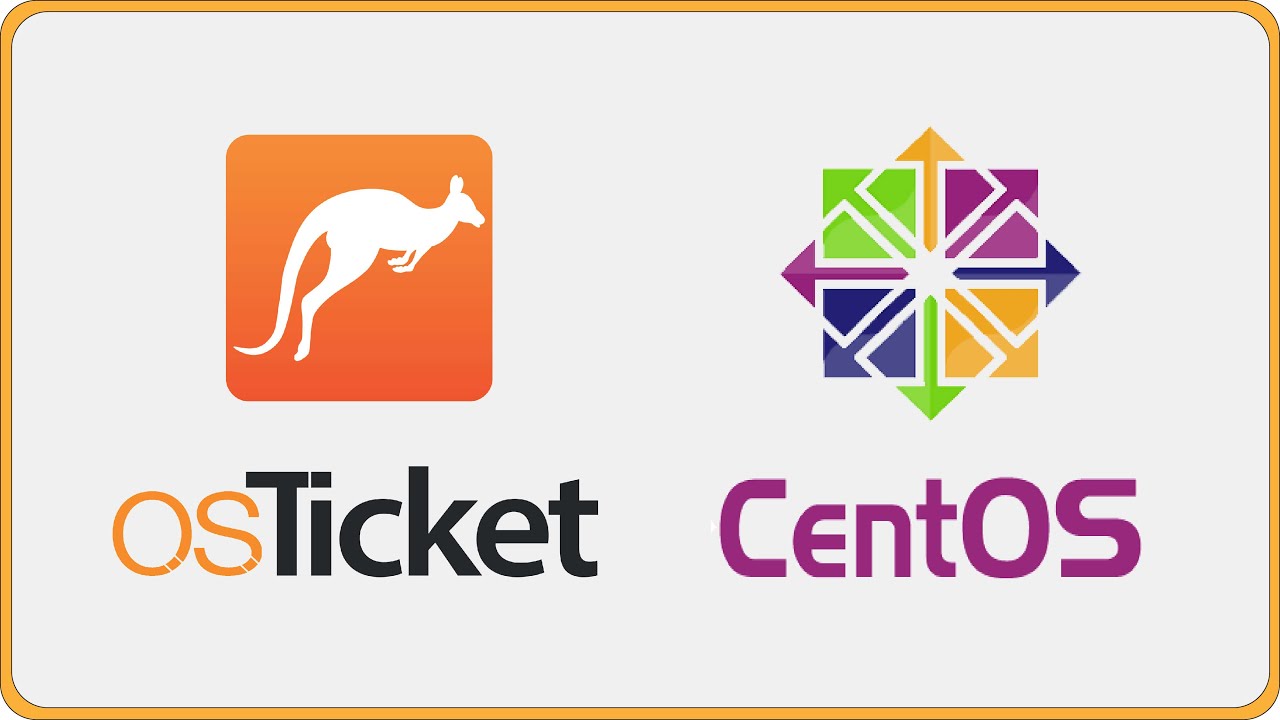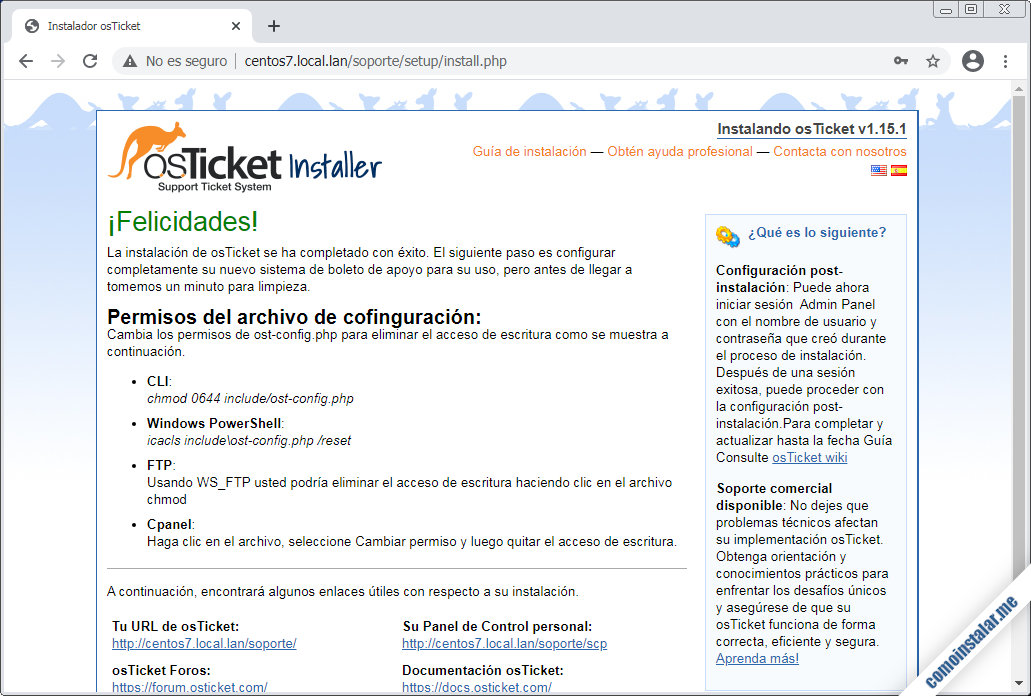
- #How to install osticket on centos 7 how to
- #How to install osticket on centos 7 install
- #How to install osticket on centos 7 update
- #How to install osticket on centos 7 password
- #How to install osticket on centos 7 free
We are being generous with 768MB in this example.īecause it is easy to move your installation, add SSL, etc. Unless you have a huge number of users you will likely be able to operate just fine even with only 512MB of RAM and a single vCPU. We can be pretty light on the resources here as this is a very light weight web application.
#How to install osticket on centos 7 install
Very few additional packages will be required, but because what is required and/or recommended is often from the EPEL, we will install that as well. We will be starting with a basic CentOS 7 image.
#How to install osticket on centos 7 free
Thanks.OsTicket is a popular open source, fully free ticketing and helpdesk system and can easily be installed on CentOS 7. If you liked this post please share it with your friends on the social networks using the buttons on the left or simply leave a reply below.
#How to install osticket on centos 7 how to
You can also read How to install LAMP on CentOS 7 for new updates. They are available 24×7 and will take care of your request immediately. # chown apache: -R /var/Of course you don’t have to do any of this if you use one of our Linux VPS Hosting services, in which case you can simply ask our expert Linux admins to install osTicket for you. # cp include/ost-sampleconfig.php include/ost-config.php Run the following commands to finalize the installation of osTicket: # cd /var/www/html/support Feel free to change these according to your needs.
#How to install osticket on centos 7 password
This will create a new database named as support and will grant all permissions to a user named support with password support. Mysql> grant all on support.* to identified by 'support' You also need to create a database for osTicket, so do it using the following commands: # mysql Also, do not forget to restart apache using service httpd restart for the changes to take effect. Of course, make sure you replace with your actual (sub)domain name. Next, append the section below to /etc/httpd/conf/nf: ĮrrorLog logs/-error_logĬustomLog logs/-access_log common You can use your favorite editor to edit the configuration file or use the command below to enable this option if it’s not already enabled: # sed -i "/^#NameVirtualHost \*:80$/ s/#NameVirtualHost \*:80/NameVirtualHost \*:80/" /etc/httpd/conf/nf This is usually done by uncommenting NameVirtualHost *:80 in your main Apache configuration file in /etc/httpd/conf/nf. CREATE APACHE VHOSTįirst, make sure name-based virtual hosting is enabled in your Apache webserver. Ok, next create a symbolic link in /var/to access the osTicket installation on your ssd virtual server. # unzip -d /opt/osticket /tmp/osTicket-v1.9.2.zip That being said, always make sure you get the latest version available and also be sure to change the relevant sections in the commands below: # mkdir -p /opt/osticket Reload privilege tables now? Y osTicket INSTALLATIONĪt the time of writing this article, osTicket is at version 1.9.2. Next, you may want to run MySQL mysql_secure_installation post installation script by running the following in your terminal: # mysql_secure_installation Install the MySQL database server, add it to your system start-up and start it up using the commands below: # yum install mysql mysql-server -y Now open the info.php file in your browser ( ) and you should see various information about your PHP installation. Once the info.php file is created, reload Apache using: # service httpd restart Test your PHP installation is OK by creating info.php file in your webserver’s document root in /var/www/html using:

Proceed with the PHP installation using the command below: # yum install php php-y OK, you can now try to navigate to ( which should be resolving to your VPS IP) and you should see Apache’s default page in your browser. Install the Apache webserver, add it to your server’s start-up and start it up using the commands below: # yum install httpd -y Let’s start with the webserver, then the php server and the extensions required by osTicket and finally the database server. Since osTicket requires a webserver, a database server and a php server, you will have to set-up these on your ssd virtual server.

#How to install osticket on centos 7 update
Next thing to do, is to always make sure your CentOS VPS is fully up-to-date using: # yum update INSTALL AND SET-UP LAMP INITIATE A SCREEN SESSIONīefore proceeding any further, SSH to your server and initiate a screen session using the following command: # screen -U -S osticket UPDATE THE CENTOS SYSTEM MySQL Database server version 5.0 or higherįor this tutorial we are using one of our SSD VPS Hosting Plans, installed with a minimal CentOS 6 base installation.What you need to run osTicket on your Linux Virtual Server?

It seamlessly routes inquiries created via email, web-forms and phone calls into a simple, easy-to-use, multi-user, web-based customer support platform. It is an open source support ticketing system. In the following tutorial we are going to show you how you can install and configure LAMP (Linux Apache MySQL and PHP) on your CentOS 6 VPS and run your own, support ticketing system powered by osTicket.


 0 kommentar(er)
0 kommentar(er)
